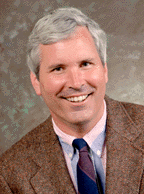Jim Siegrist |
 |
|
Particle Experiment Professor Siegrist received his Ph.D. from Stanford in 1979. After completing his degree, he visited the CERN laboratory in Geneva, Switzerland for two years while working on the UA2 experiment. He came to Lawrence Berkeley National Laboratory as a Division Fellow at the end of 1983 to work on the Collider Detector at Fermilab experiment in Fermilab. He joined the UCB faculty as an associate professor in 1988. During the 1990-93 academic years, he was on leave at the former Superconducting Super Collider Laboratory in Dallas, Texas. He returned to UCB before the 1994 academic year. Recent awards include Fellow of the American Physical Society. Head, Physics Division, LBNL, 1996 - present. Research Interests Professor Siegrist has worked since 1981 on the physics of proton anti-proton annihilations at the highest available center of mass energies. His current work centers on the Collider Detector at Fermilab (CDF) experiment at the Fermi National Accelerator Lab (FNAL) in Batavia, Illinois. He, along with a number of other staff members at Lawrence Berkeley National Lab (LBNL), is active in the maintenance and further development of hardware and software for this experiment, which he first joined during its construction in 1983. Experimental groups from Japan, Italy, and a number of other U.S. institutions, as well as our own, readied the detector for operation, and have continued to improve the apparatus since 1988. In addition to work on CDF at FNAL, the group is also involved in the design and development of apparatus for the future proton collider experiment ATLAS at CERN, the European Accelerator Center in Geneva, Switzerland. Current Projects There are now, and will continue to be, opportunities for graduate students
to be involved in these activities.
|
|
For more information please contact: Cathy Thompson |